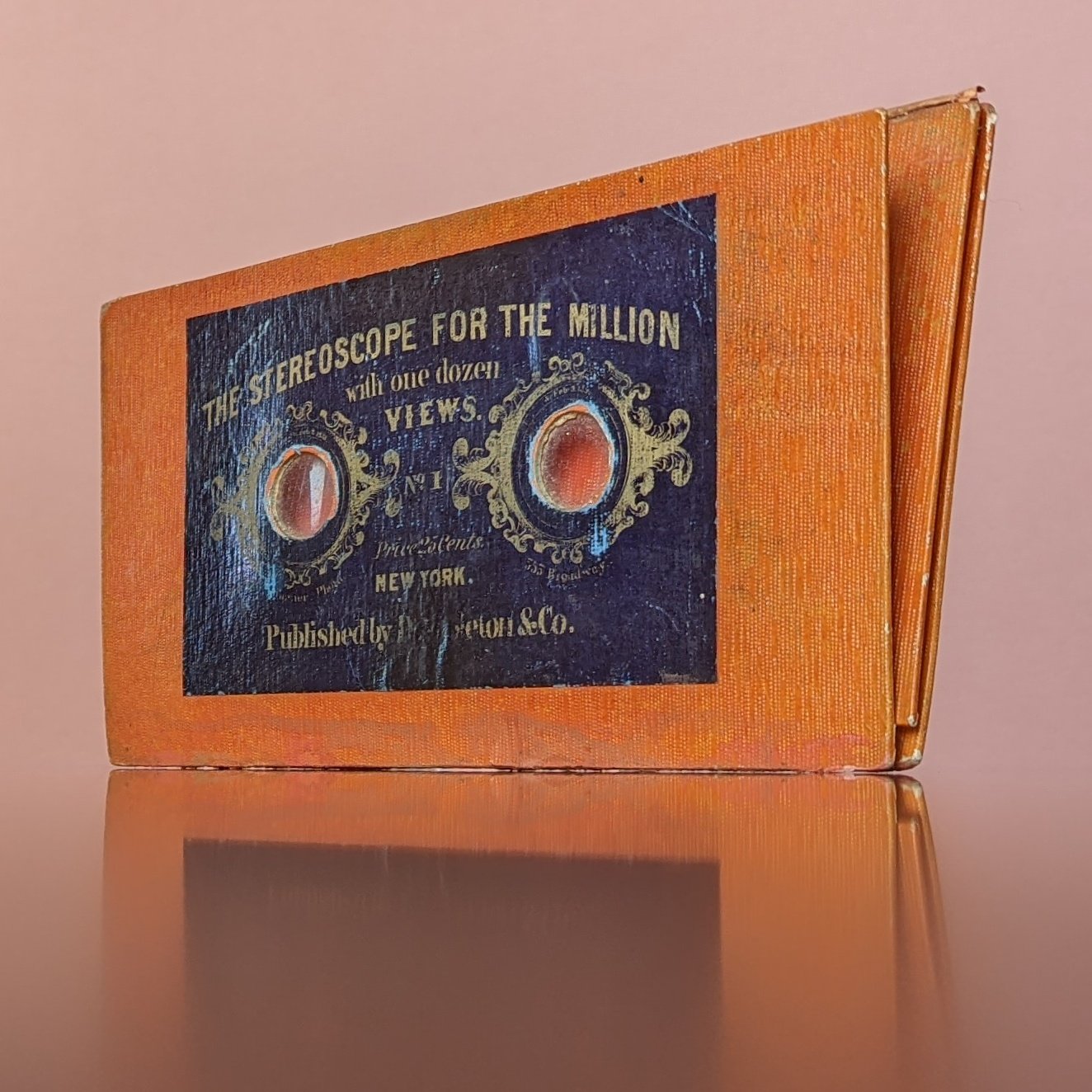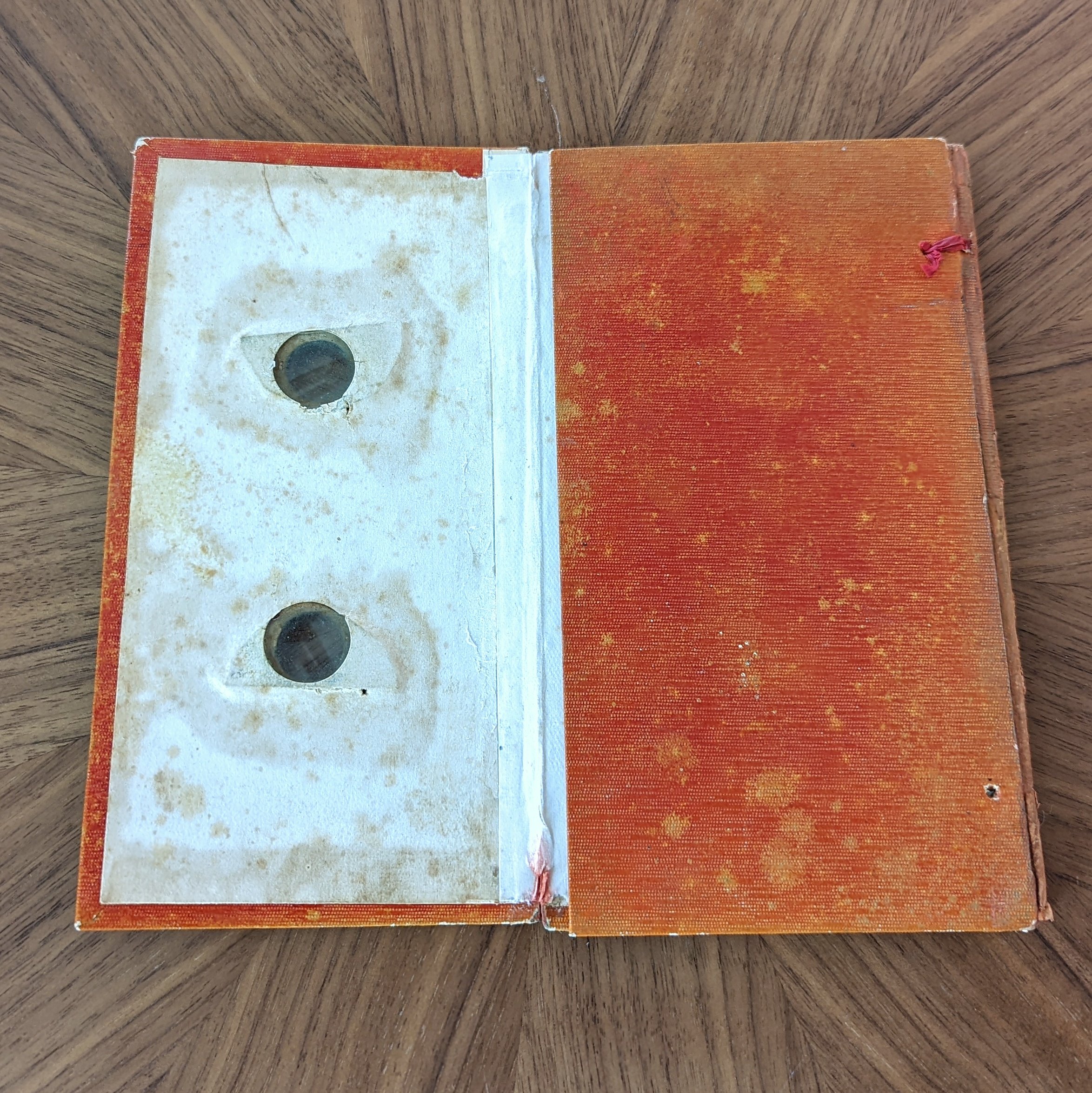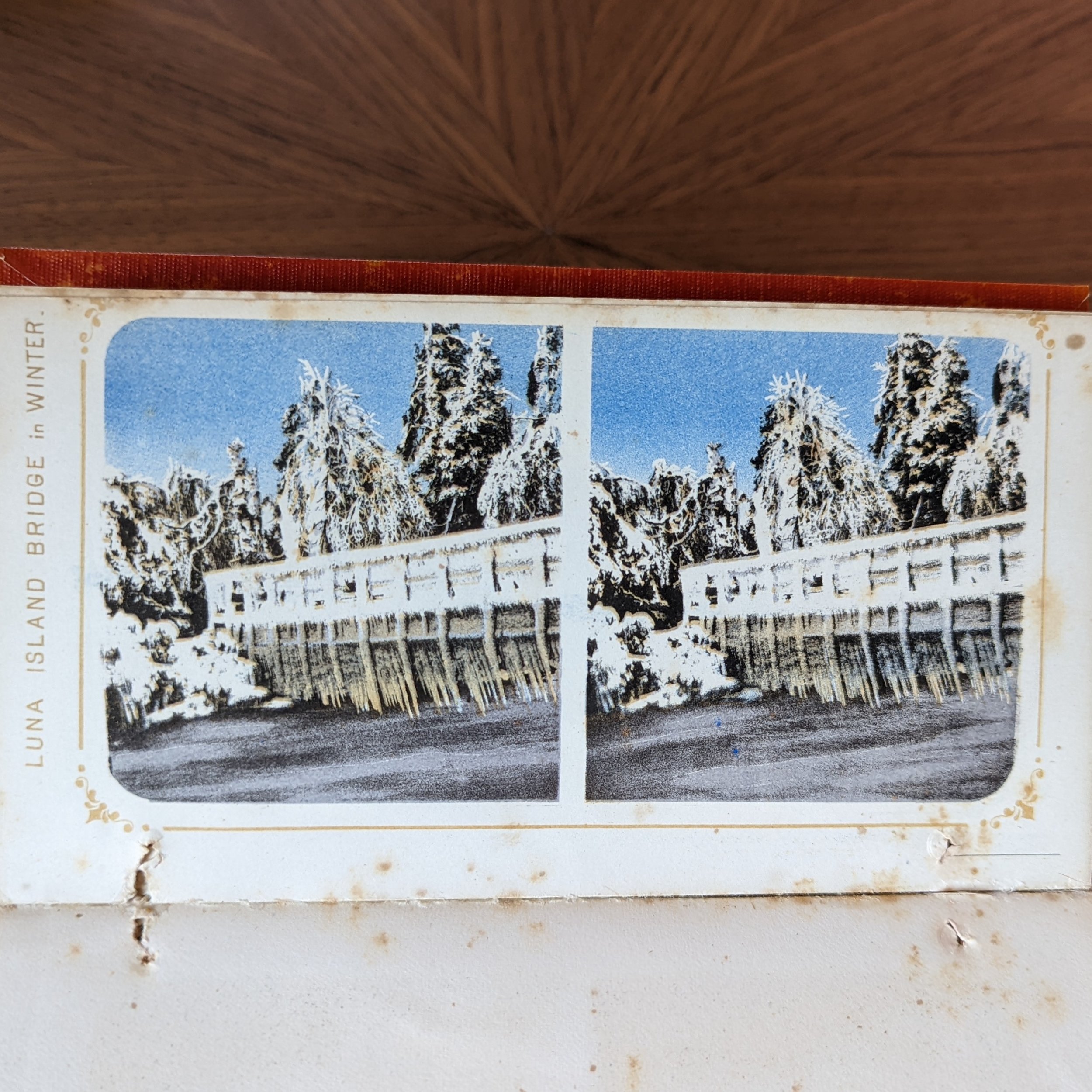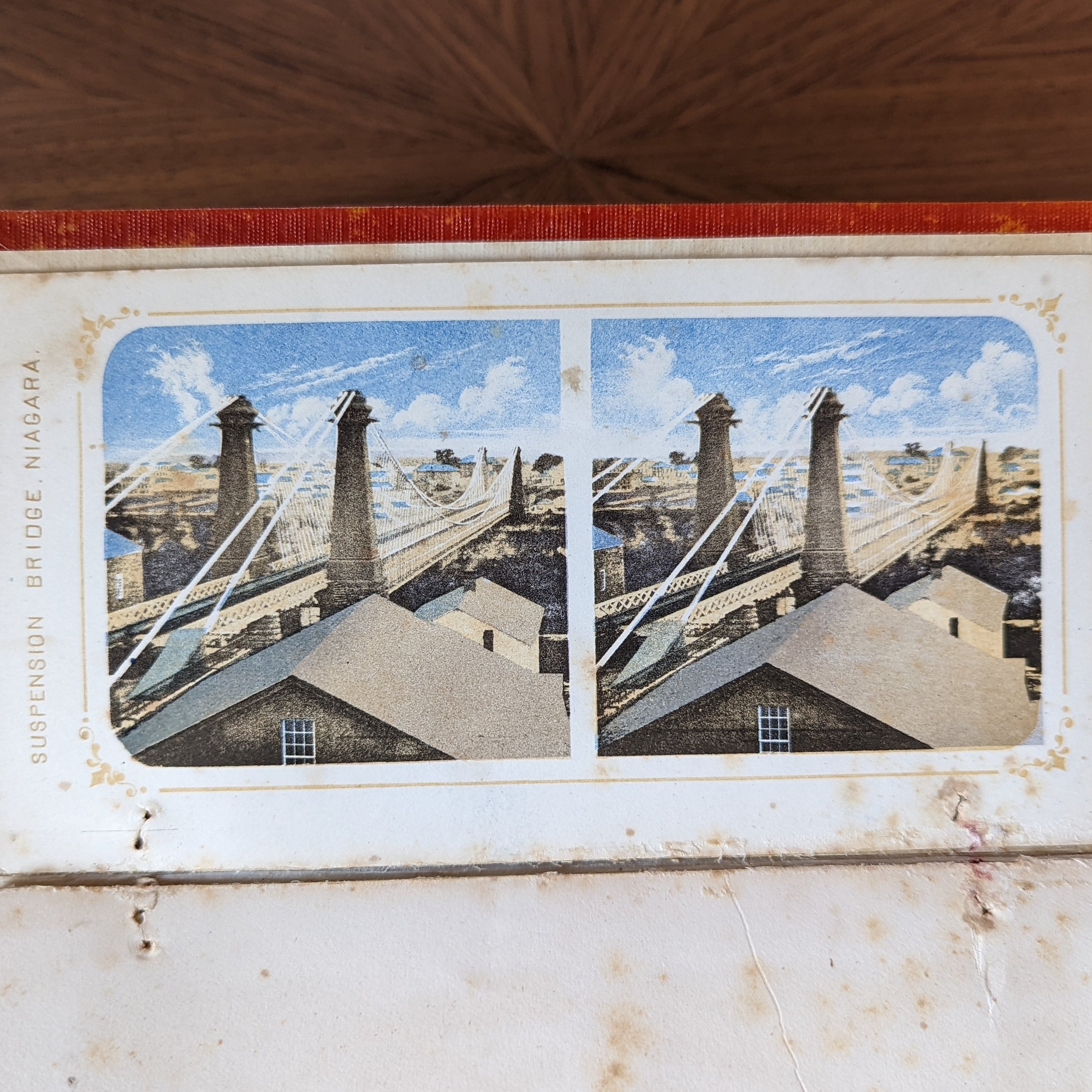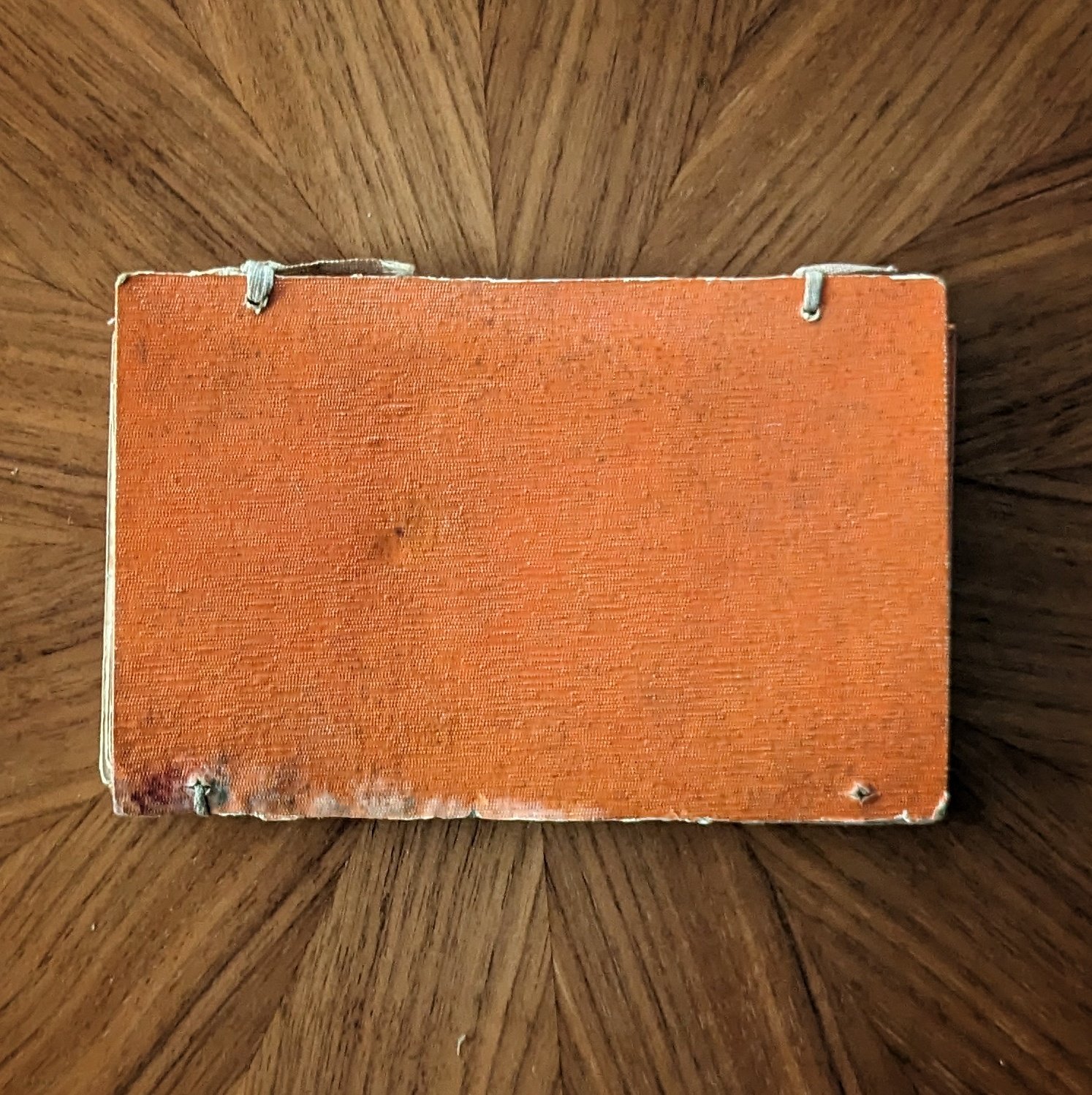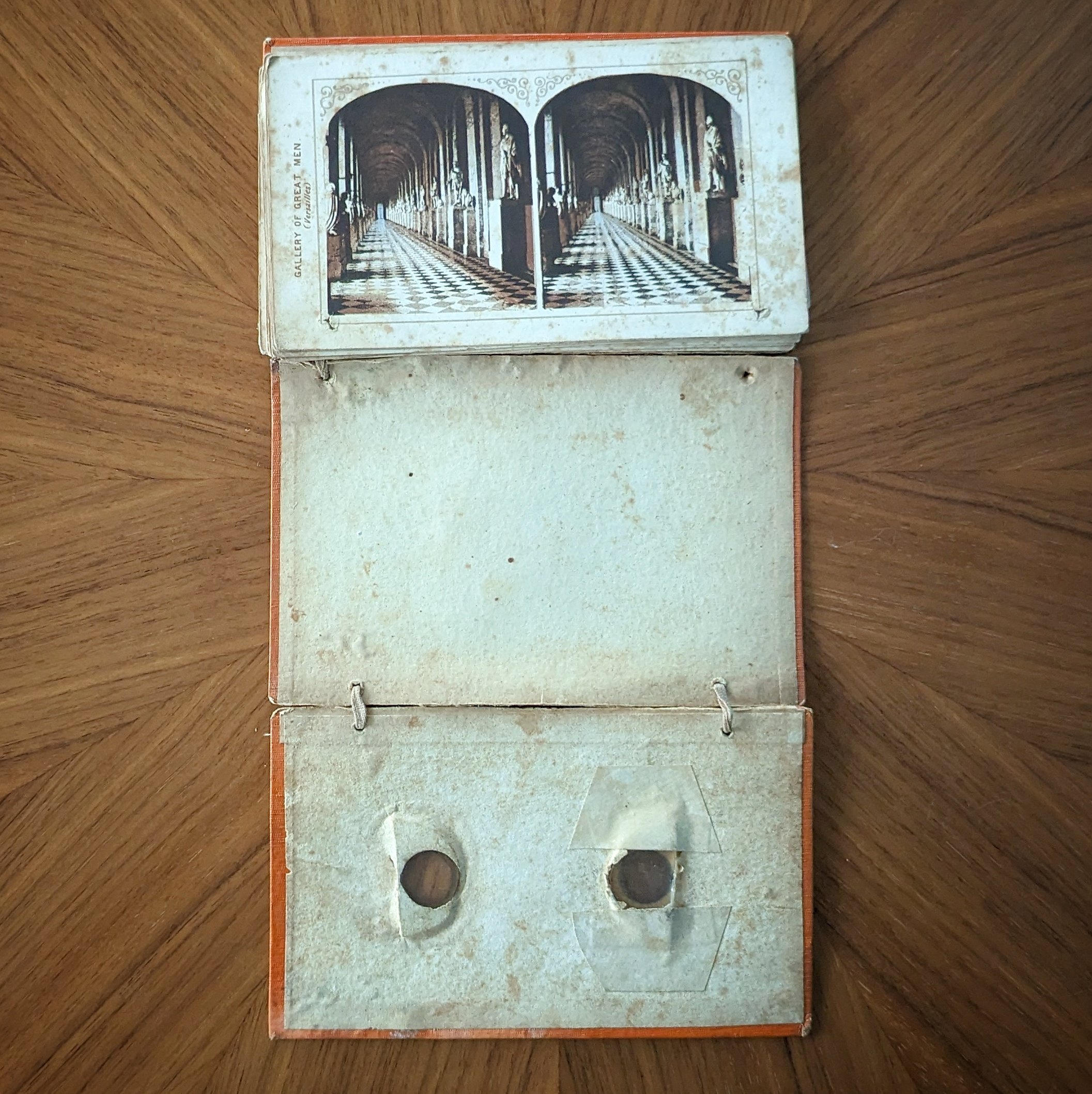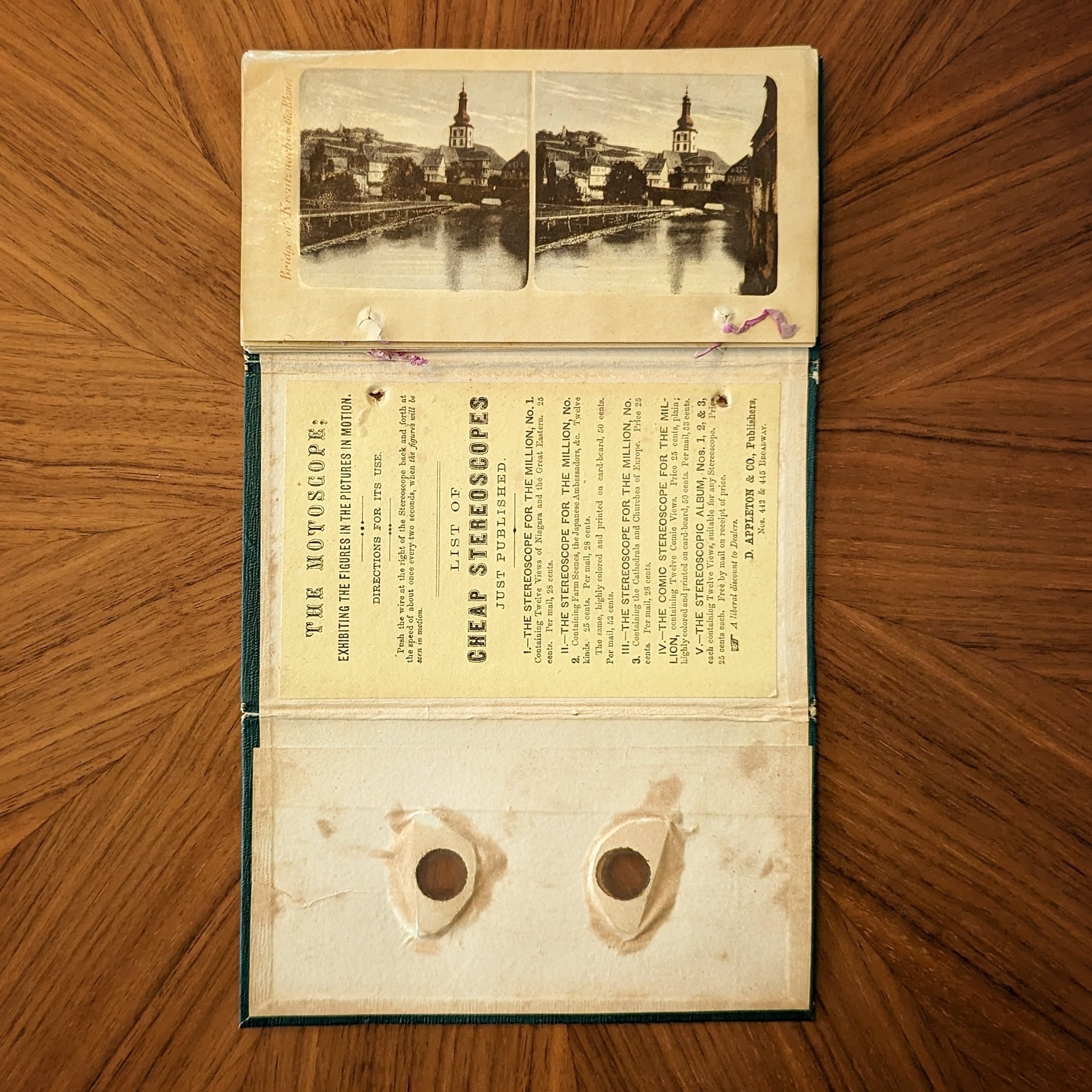Stereoscope for the Million / Voyage to Europe
United States, 1860s
This 19th-century cardboard 3D viewer is one of the early experiments with album stereo viewers and is featured in Paul Wing’s book, Stereoscopes: The First One Hundred Years. These folding album stereoscopes were published by D. Appleton & Company in New York, a major importer of stereoscopes and stereoviews that helped usher the new medium into the United States in the early 1850s. The Stereoscope for the Million was available in at least 3 volumes:
Niagra & the Great Eastern
Farm Scenes, the Japanese Ambassadors, etc.
Cathedrals & Churches of Europe
They also published 3 volumes of a Stereoscopic Album (this may have just been only stereoviews with no viewer) and another stereoscope album product called Voyage to Europe.
Primary Material: Cardboard
Media Format: Lithograph paper
Light Source: Natural light
Focus: Fixed
Interocular: Fixed
Stereoscope for the Million, Volume No. 1
Volume No. 1 of the viewer (shown below) held 12 colored lithograph stereoviews of Niagara and the Great Eastern bound inside 3 cardboard pieces with ribbon — ours is missing the ribbon and only has 6 stereoviews remaining. One of the remaining views shows the 1860 crossing of the Niagara on tight rope by the most famous of Niagara daredevils “the Great Blondin” (Jean Francois Gravelot).
Stereoscope for the Million, Volume No. ?
We’ve been unable to read the volume number on this one and the views don’t match any of the published lists we’ve seen that describe the 3 volumes of the Stereoscope for the Million. We also note that this volume is smaller in size than the others.
The Voyage to Europe, visiting twelve countries
The stereoviews in the Voyage to Europe album are on glossy, toned paper unlike the Stereoscope for the Million albums above. This one has all 12 lithographed stereoviews, a fully legible cover, a partially intact binding ribbon, and still has the original insert advertising the Mutoscope (a different stereoscope) and the full list with descriptions of the Stereoscope for the Million volumes — their “cheap stereoscopes”.

